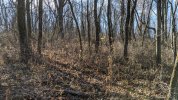Hoytvectrix
5 year old buck +
I'm curious if anyone here has had much success with controlling multiflora rose. We have several wooded hillsides that are nearly completely covered in multiflora rose (and other thorny thicket plants). From what I've read, it can be difficult to control because of a prolific weed seed bank.
Penn State has an extension bulletin on its growth and control (https://extension.psu.edu/multiflora-rose). Seems like glyphosate and/or triclopyr are the way to go for foliar treatments. I know Grant Woods has used prescribed fire to control it on his place in southern MO.
Are there any success stories out there? Or is this something that we should just accept and live with. Is it even worth trying to remove?
Penn State has an extension bulletin on its growth and control (https://extension.psu.edu/multiflora-rose). Seems like glyphosate and/or triclopyr are the way to go for foliar treatments. I know Grant Woods has used prescribed fire to control it on his place in southern MO.
Are there any success stories out there? Or is this something that we should just accept and live with. Is it even worth trying to remove?
